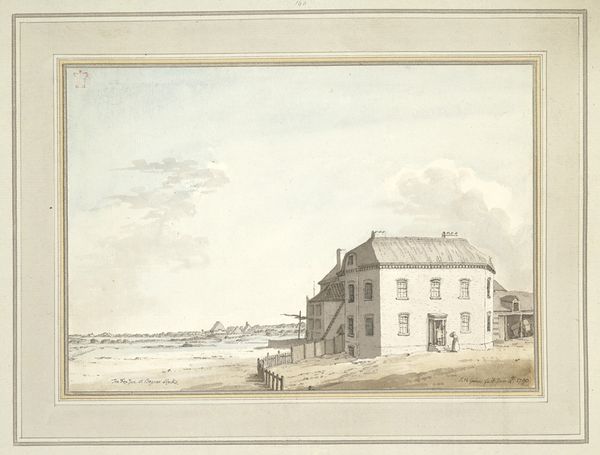Annotation:Bognor Rocks (1)
X:1 T:Bognor Rocks [1] M:C| L:1/8 R:Country Dance B:Preston's Twenty-Four Country Dances for the Year 1800 Z:AK/Fiddler's Companion K:A a2 ed cAec|Bcde fBbg|a2 ed cAec|dfed cA A2:|| c/B/A EA cAec|Bcde fBed|c/B/A EA cAec|dBed cA A2| c/B/A EA cAec|Bcde fBed|cefd eabg|afed cA A2||
BOGNOR ROCKS [1]. AKA and see "Comical Reel," "Kilkenny Hunt (The)," "Honorable Mrs. Maule," "Linen Cap (The)," "Rakes of Invercairn," "Sheep Shanks," "Struy Lodge." English, Country Dance Tune (cut time). A Major. Standard tuning (fiddle). AAB. The tune was originally composed by Robert Macintosh as "Honorable Mrs. Maule," in honor of a Scottish politician's wife. Bognor is a town on the Sussex coast, in the extreme south of England, near Chichester. 1870-72, John Marius Wilson described it in his Imperial Gazetteer of England and Wales (1870-72):

The town was changed from an obscure hamlet to a fashionable watering-place, between 1786 and 1799, by Sir Richard Hotham, at a cost of about £60,000; and took, for a time, the name of Hothamston. It was frequented by Queen Charlotte and her children, in the time of George III.; and it then possessed a sort of exclusive character; but it afterwards became dependent on general public patronage. It comprises rows of brick houses, two squares open on one side to the sea, a crescent, a terrace, and several detached mansions; it possesses good lodginghouses, several hotels, and excellent bathing conveniences; and it has a church of 1821, an Independent chapel of 1869, a Wesleyan chapel, a public school for 50 girls, a reading room, a circulating-library, a people's institute, a small annual regatta, and occasional races. Markets are held thrice a-week; and a fair on 5 July. The surrounding country is flat; and the Bognor rocks, famed by geologists, and not long ago forming a line of low cliffs along the coast, are now visible only at low water.

